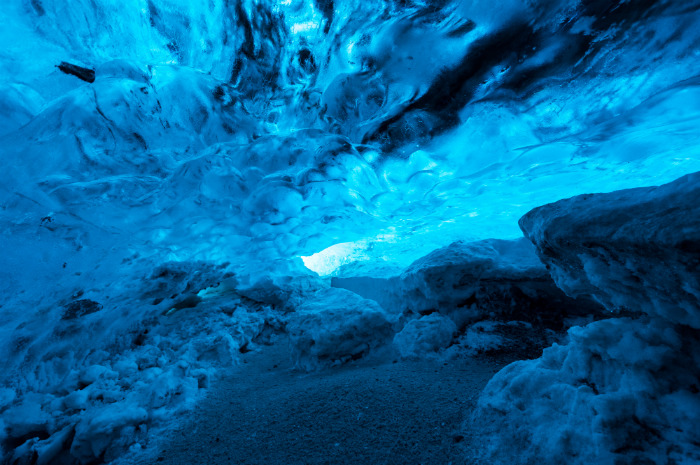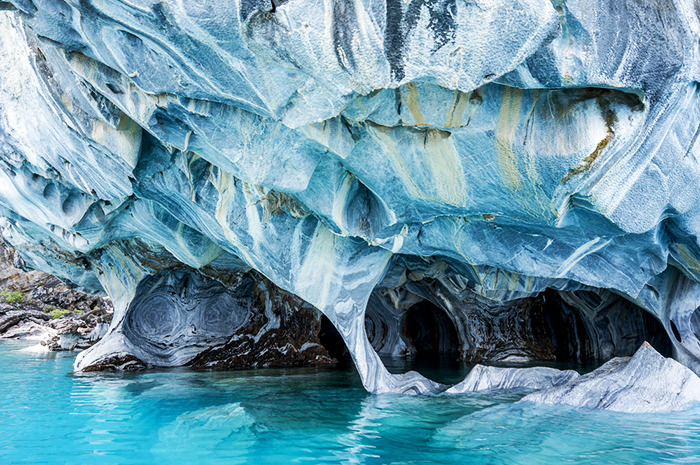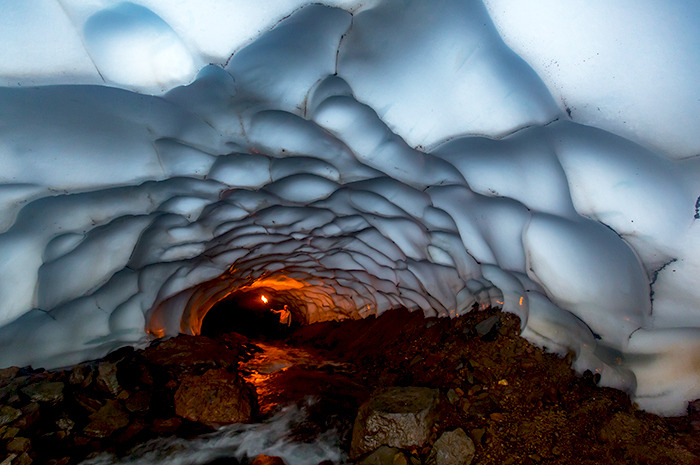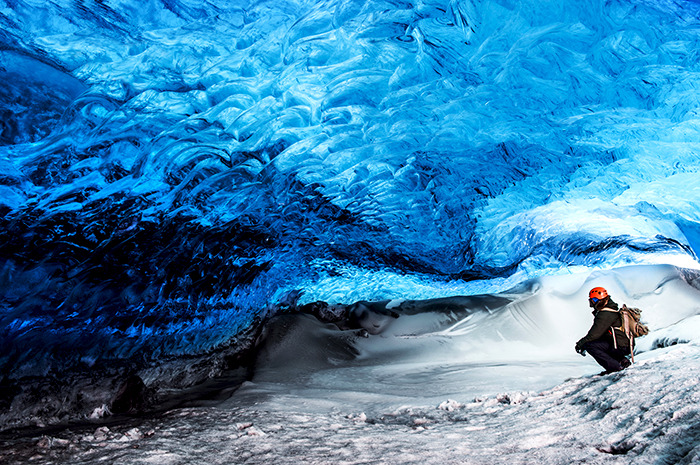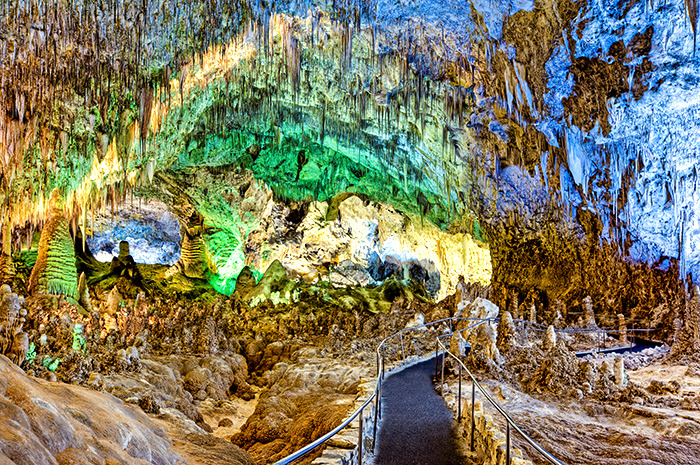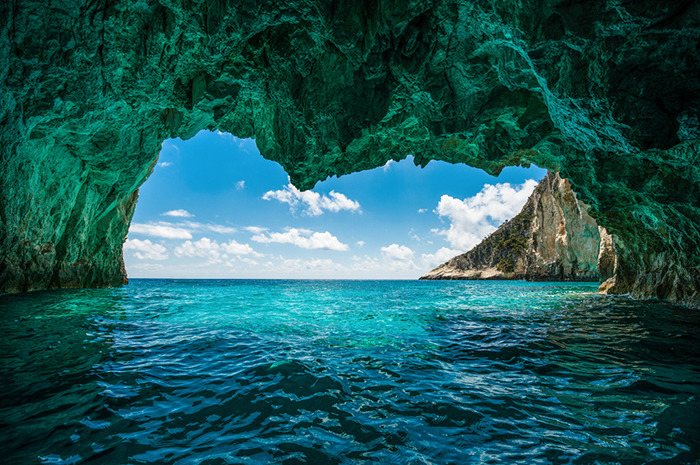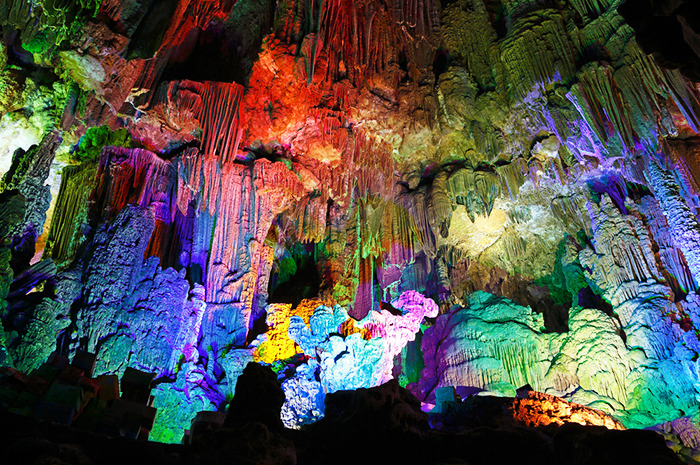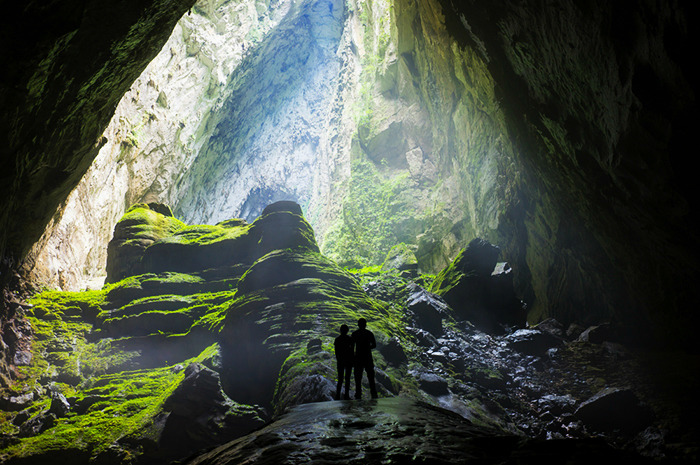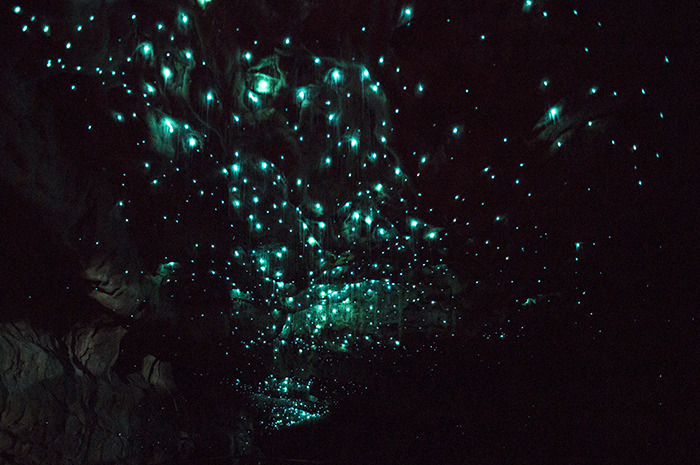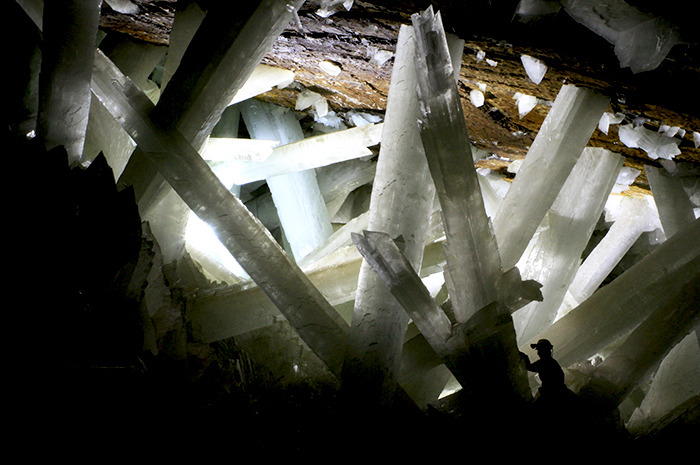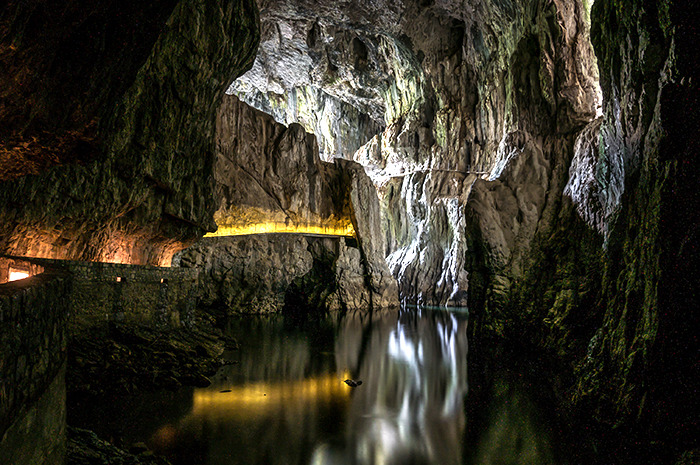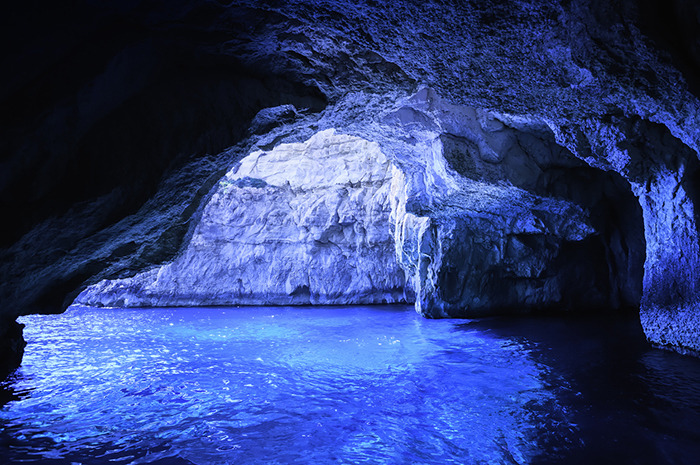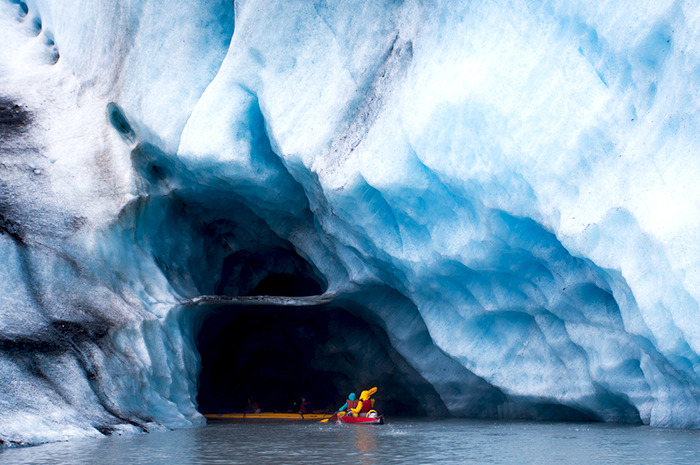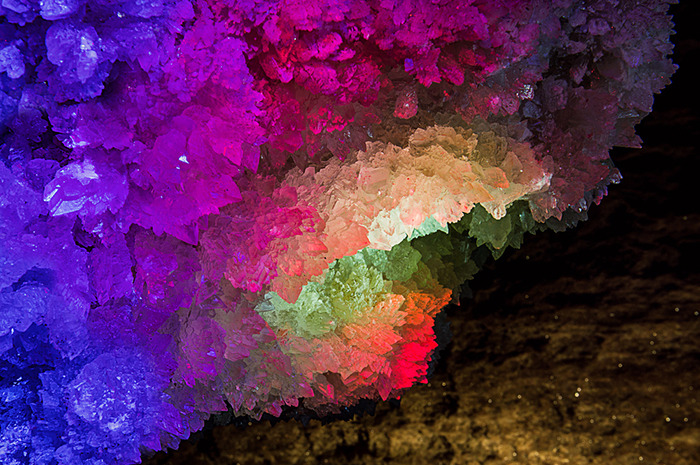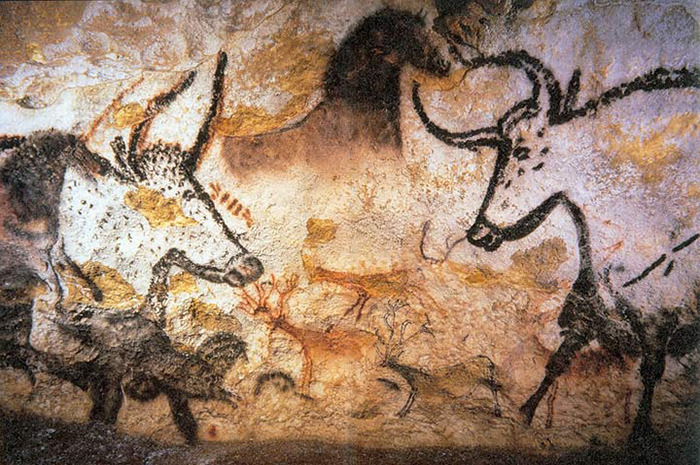The Most Beautiful Caves In The World
The world map can be deceiving; it creates an illusion that there is nothing left on Earth to discover. But the depths of the ocean are still largely unexplored and some parts of the poles haven't yet been seen by human eyes. Other than that it seems that people have found almost everything else—and this is where caves come in.
Marble Caves, Chile
Out in the turquoise waters of General Carrera Lake sits tons of marble, elegantly shaped by nature into caves. Viewing them in person is a far more beautiful experience than looking at any photo, but getting there is more difficult than you can imagine. After a series of flights leading toward the city of Coyhaique, you'll need to drive another 200 miles and then board a boat, which will get you to the caves.
Ice Cave near the Mutnovsky Volcano, Russia
This is perhaps one of the most magical places on the planet. Fire and ice meet to create a marvelous picture. The chambers of this wondrous ice cave are carved through Kamchatka's glaciers by volcano-fed hot springs. Sunlight manages to enter through the thinning glacial ice above to make the spectacular view even more otherworldly.
Vatnajökull Glacier Ice Cave, Iceland
This is by far the largest glacier in the country, covering an area of roughly 5,500 square miles and is almost 0.7 miles thick at its deepest point, making it the largest glacier mass in Europe, according to Extreme Iceland. Set in the Vatnajökull National Park, the magnificent ice caves attract travelers from all over the world. These mighty chunks of ice are made of highly pressurized glacier ice that's thousands of years old, and they are an incredible sight.
Carlsbad Caverns, New Mexico
Carlsbad Caverns National Park is home to more than 117 known caves — all formed as sulfuric acid dissolved the surrounding limestone. The Big Room will give visitors a peek into the main section of a cave, while guided tours of varying difficulties can be reserved in advance. Witness a bat flight, a hair-rising adventure in the caves. Hundreds of thousands of Brazilian free-tailed bats fly out of the cave at sunset in the summer in their nightly search for food.
Sumaguing Cave, Philippines
This is a popular destination for spelunking (also called potholing in the U.K. and Ireland) in the Philippines. The cave, also known as the Big Cave or Cave Princess, is the largest chamber connecting all the 60 caves of the town. The stalagmites and stalactites form inside formed millions of years ago.
Blue Cave, Greece
Zakynthos is one of the largest islands in the Ionian Sea and the Blue Caves on the western coast offer some of the most amazing views in the entire country. They are only accessible from the sea, according to the Greek Islands Specialists. They reflect the vibrating and striking blue color of the waters and capture the shine of the transparent sky reflected on their surface.
Reed Flute Cave, China
The surreal qualities of this cave have a lot to do with the artificial lighting, but the natural limestone is over 180 million years old and is filled with many strange and surreal shapes. The colors simply add to the fun. The cave got its name from the type of reed growing outside.
Son Doong Cave, Vietnam
Initially found by a local man in 1991, the Son Doong Cave was fully discovered in 2009, making it the largest known cave passage cross-section in the world. The name translates to "mountain river cave" and there is, in fact, a quick-moving river within the cave, which is how the cave was initially formed sometime between 2 and 5 million years ago.
Eisriesenwelt Ice Caves, Austria
Thought to be the largest network of ice caves in the world, the 26-mile-long underground cavern in the Austrian Alps translates as "world of ice giants" because of its huge size and eerie formations that fill its "rooms." The astonishing underground natural ice sculptures and formations are absolutely stunning.
Waitomo Glow Worm Cave, New Zealand
Few natural marvels in the world can compare to an awe-inspiring tour through the glow worm caves in Waitomo. It is difficult to capture the magnificent beauty that occurs in these caves. The glowworms in this particular cave are a species around the same size of a mosquito found exclusively in New Zealand. As you paddle through the caves, the glowworms light the ceiling above you, twinkling like the night sky.
Cave of Crystals, Mexico
The cave is almost 1,000 feet below the earth's surface. Discovered in 2000, much of the cave still hasn't been explored due to the extreme conditions. With temperatures that can reach 136 degrees and 90 to 99 percent humidity, people can only endure 10 minutes in the caves at a time without protection. The Cave of the Crystals is home to some of the largest natural crystals ever found.
Škocjan Caves, Slovenia
This extraordinary system of limestone caves includes collapsed dolines, some four miles of underground passages with a total depth of more than 660 feet, many waterfalls and one of the largest known underground chambers, according to UNESCO. The site, located in the Kras region, is one of the most famous in the world for the study of karstic phenomena.
The Blue Grotto, Italy
The Blue Grotto is a natural sea cave, 197 feet long and 82 feet wide. It's only about three feet high, so visitors can only see it while aboard small rowboats. The cave is famous for the light that illuminates the inside of the cavern. The reflections are spectacular through the morning hours and around noon. Roman emperors used the Blue Grottos as their private natural pool, according to Italy Guides.
Valdez Glacier Caves, Alaska
The Valdez Glacier Tour is a popular way to explore the ice caves. You'll explore icebergs and even kayak into the glacial cave. "Paddling near icebergs and exploring the caves with its multi-hues of blues, listening to the glacier water melting and tiny glacial streams, walking on Valdez Glacier gave us ... more amazing discoveries looking down crevasses and kettle ponds on top of the glacier," a review on TripAdvisor says.
The Mlynki Cave, Ukraine
The cave, where the walls are lined with crystals, features 48 miles of twisting and whirling passages. The rare crystal cave is covered with marvelous gypsum crystals, creating a phenomenon that looks like a sky of majestic and sparkling stars.
Lascaux Caves, France
Lascaux Cave is a Palaeolithic cave that is home to some of the most famous examples of prehistoric cave paintings. Close to 600 paintings – mostly of animals – dot the interior walls of the cave in impressive compositions, according to the Ancient History Encyclopedia. Horses are the most numerous, but deer, aurochs, ibex, bison, and even some felines can also be found.
